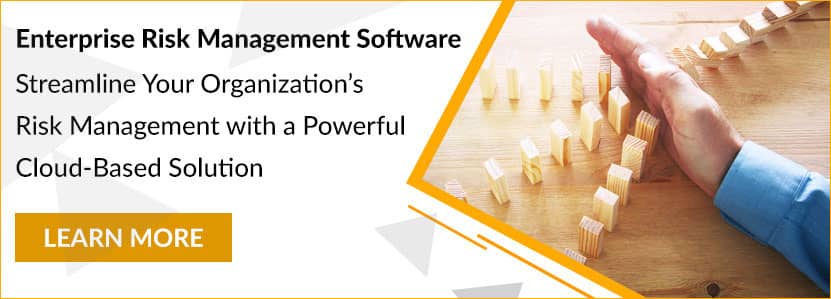Home/ Blog / The Rising Need of Automation in Risk and Compliance Management
Businesses are seeking more efficient and effective solutions for managing risk and compliance. This need is driven by several factors, but the two main reasons are increased government oversight and market competition. These two reasons have resulted in increasing adoption of risk and compliance technology in the financial sector. Previously such technology was common in large banks and enterprises, but advances in modern technologies has made platforms and point solutions attractive for smaller organizations as well.
A Paradigm Shift in Governance
Governments all over the world are now driving organizations toward greater openness and accountability in response to the complex and modern risk environment. Gone are the days when the government was mainly interested in the financial reporting of a business. Governments are now reassessing the way they measure the impact of a business on society and the environment. This means expanding the scope of existing regulations and introducing new rules and oversight measures.

In the United States, the Department of Justice revised its guidelines for assessing successful enforcement policies in 2020, and the current Biden Administration has already stated that it would demand more climate change and racial equality transparency from companies. This means that businesses will also have to change the way they manage risk and compliance. They will need systems that enable them to expand the scope of their risk and compliance programs while maintaining the organization’s profitability.
Manual Methods Are Now Obsolete
Boards will need resources and data in 2021 to assess, monitor, and report on business risks. The need for good corporate governance has been accelerated by the pandemic and uncertainty of 2020. Spreadsheets, standalone systems, and operating in silos are insufficient to track and weigh the many dynamic risks that lie ahead; purpose-built integrated risk management technology is the most efficient way to continuously control risk.
Intelligent automation is changing how businesses interact with the board, from finance to logistics and human resources. Basic Robotic Process Automation (RPA) and advanced process technologies like Artificial Intelligence (AI) will unlock the ability to do things quicker, easier, and affordable. These technologies are simple to implement and provide a fast return on investment. Businesses can now implement risk and compliance management solutions in the timeline of weeks instead of months. This provides two major benefits to businesses; disruptions are kept at a minimum and the solutions start generating ROI quickly.
Gone are the days when the government was mainly interested in the financial reporting of a business. Governments are now reassessing the way they measure the impact of a business on society and the environment. Share on XThis means that risk and compliance solutions are quickly becoming a competitive necessity for financial organizations. No business wants to be left behind when it comes to efficiency and performance. Businesses that are still using manual methods to manage risk and compliance risk being a generation behind the risk and compliance performance of businesses that are using and utilizing technology correctly.
The Key to A Successful Digital Transformation
Banks and financial institutions will now have to change the way they handle many processes. Instead of simply implementing a risk and compliance tool, businesses will have to take another step and properly integrate risk and compliance technology and monitoring in enterprise-wide processes. This results in unsustainable improvement in risk and compliance performance.
It is critical to note that a clear picture of risk appetite, as well as the organization’s current compliance with business and regulatory requirements required. A clear understanding of the requirements allows businesses to get their risk and compliance solution properly customized by the vendor. Customer solutions are generally more effective because they can fulfill all the needs of an organization. Many cloud-based solutions can also be implemented in parts; giving businesses that choice to pay for only the solutions that they need to use.
It is also important to include as many stakeholders as possible in the implementation and procurement stage of risk and compliance technology. Legal, internal audit, IT, and regulatory functions, as well as any current risk management functions, are all affected by integrated risk management. Advocates for IRM must recognize and maintain the cooperation of in-house associates, senior management, and the board, which has overall responsibility for ensuring successful risk management, in addition to partnering with other agencies.
Risks must be tracked on an ongoing basis to be quickly mitigated. New threats should also trigger a warning and be communicated to key stakeholders so that risk management leaders can prioritize the organization’s high-level risks, pressing issues, and less urgent considerations, as well as mount a strategic response.
Interested in seeing how your organization can improve its risk management and compliance management framework with the help of risk and compliance technology? Get in touch with our risk and compliance experts for a demonstration of Predict360, our risk and compliance solution endorsed by the American Bankers Association.
Request a Demo
Complete the form below and our business team will be in touch to schedule a product demo.
By clicking ‘SUBMIT’ you agree to our Privacy Policy.




